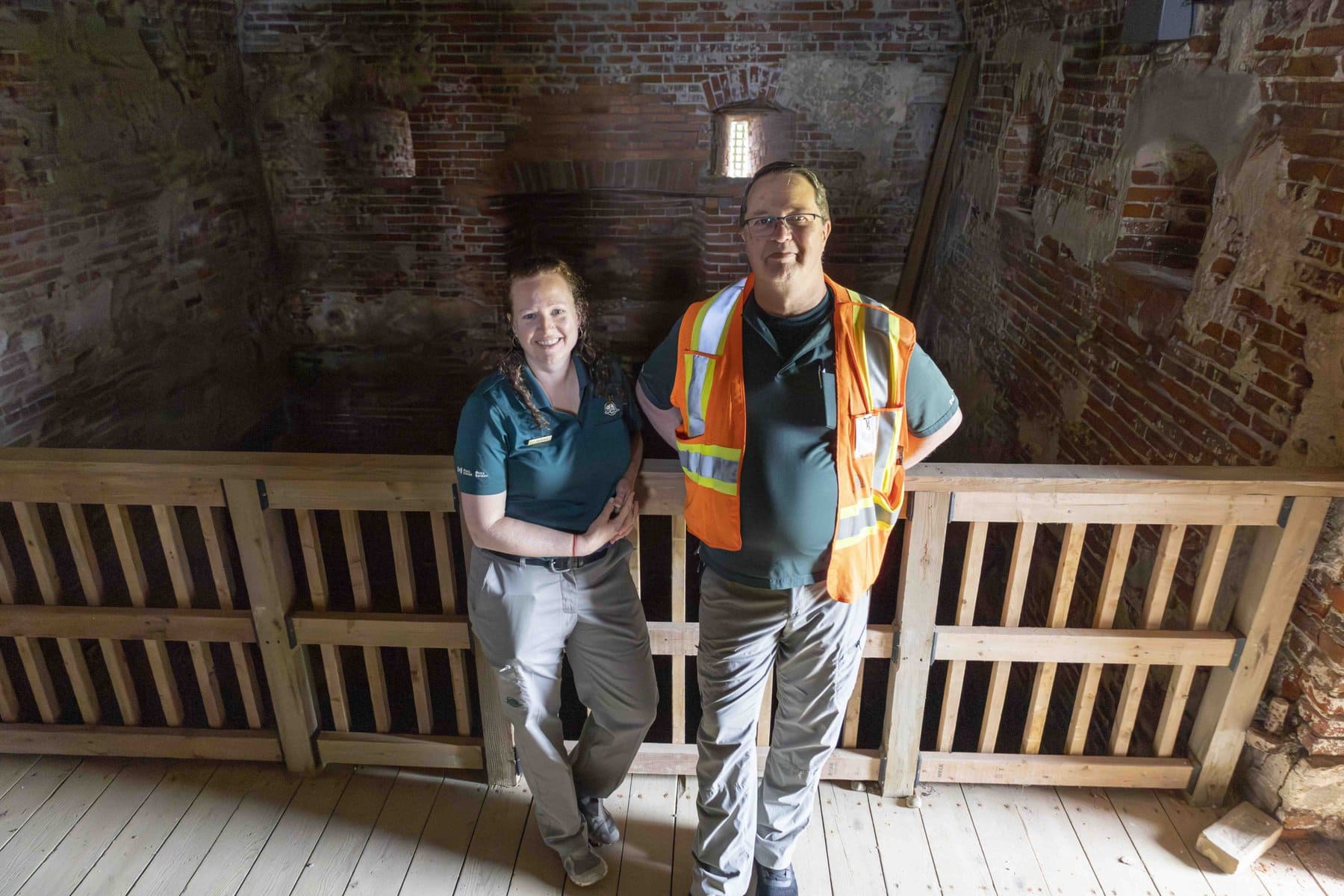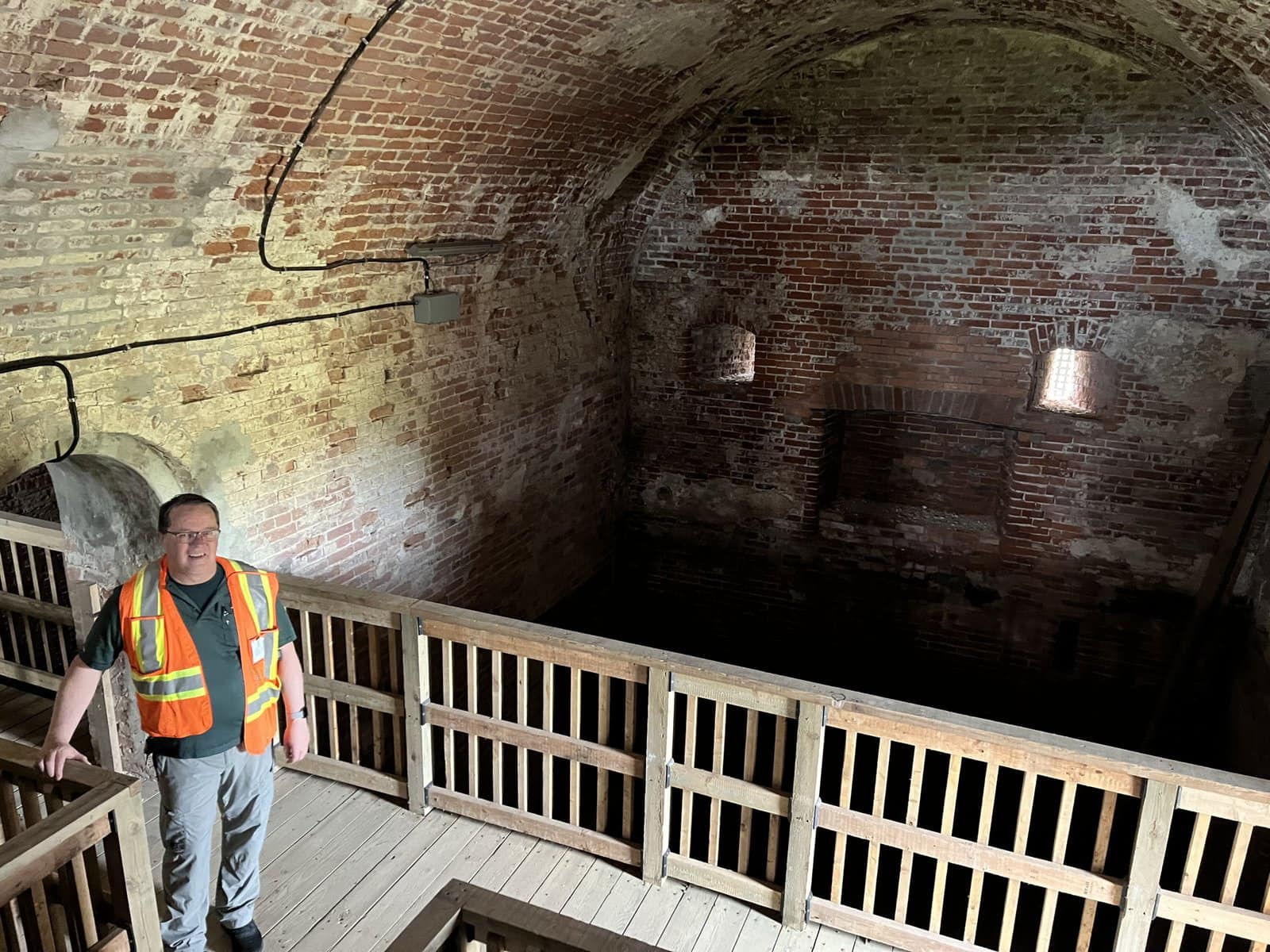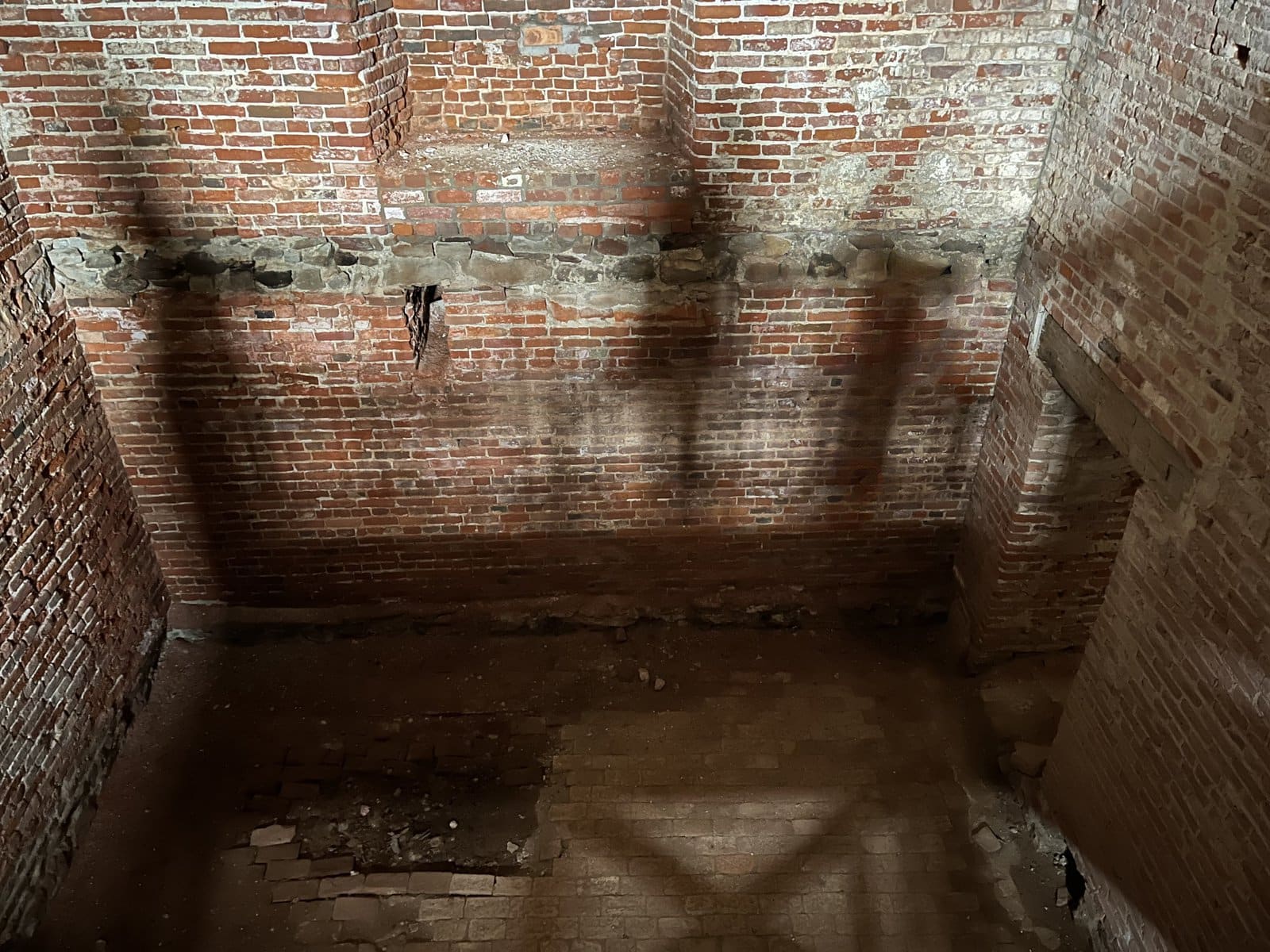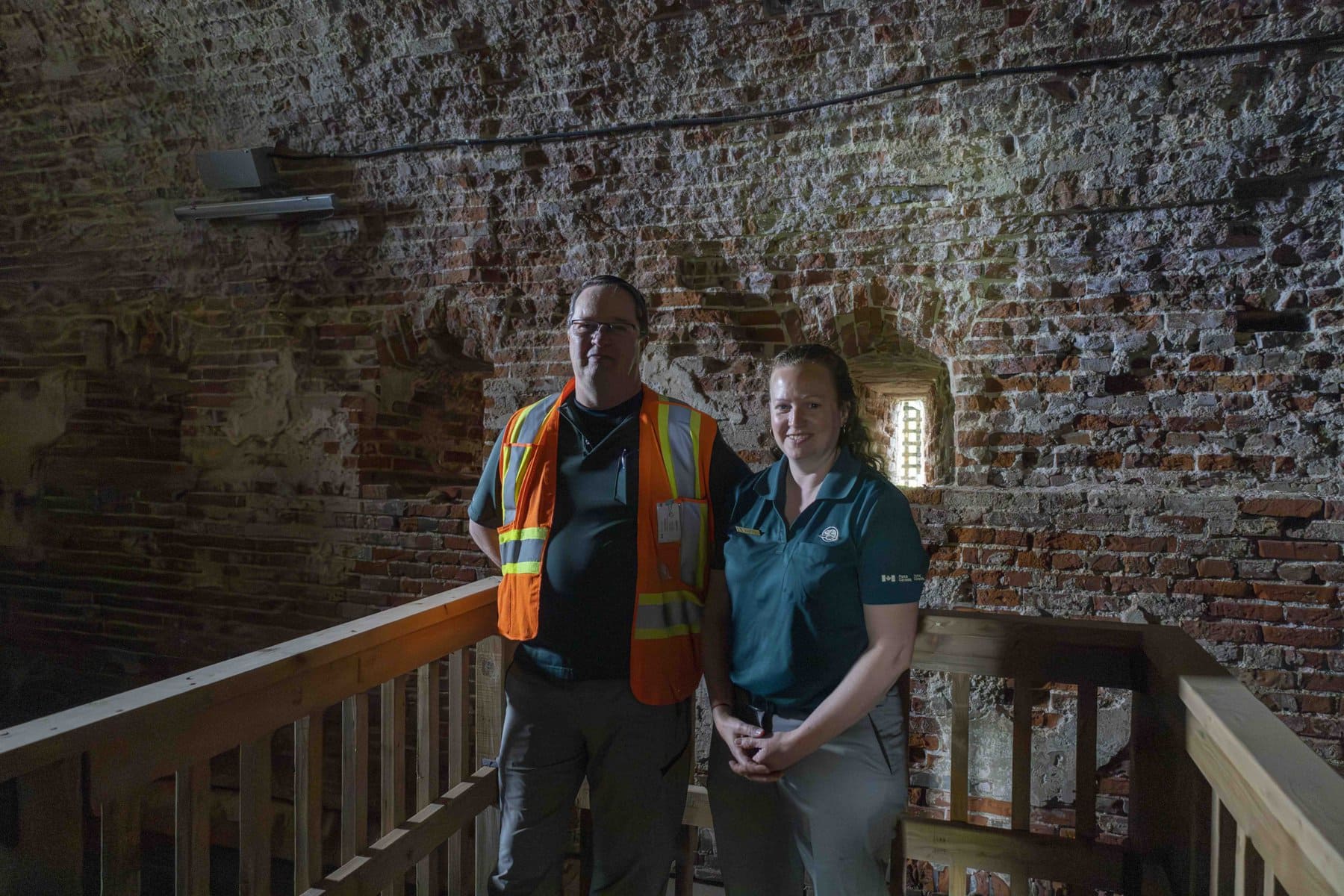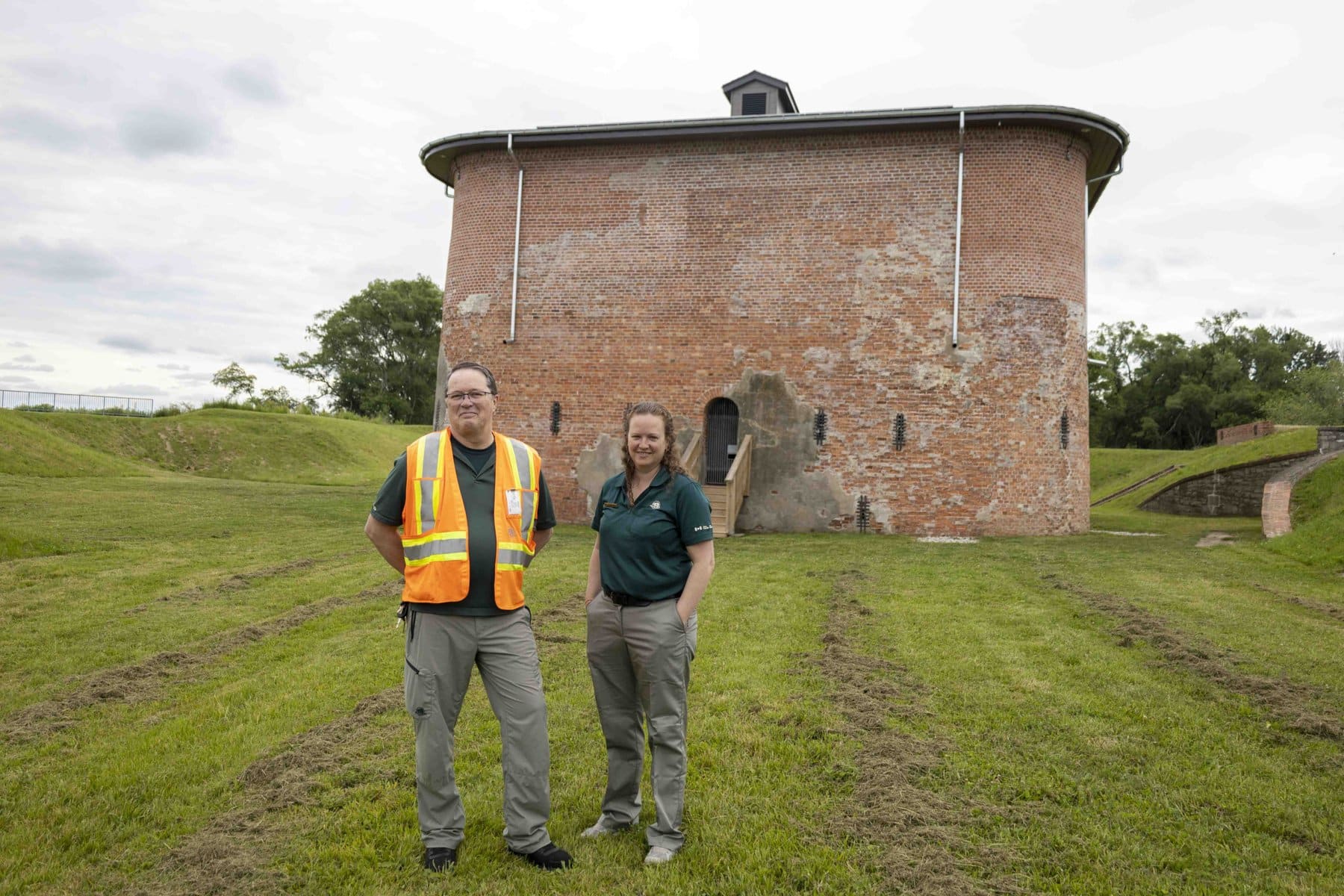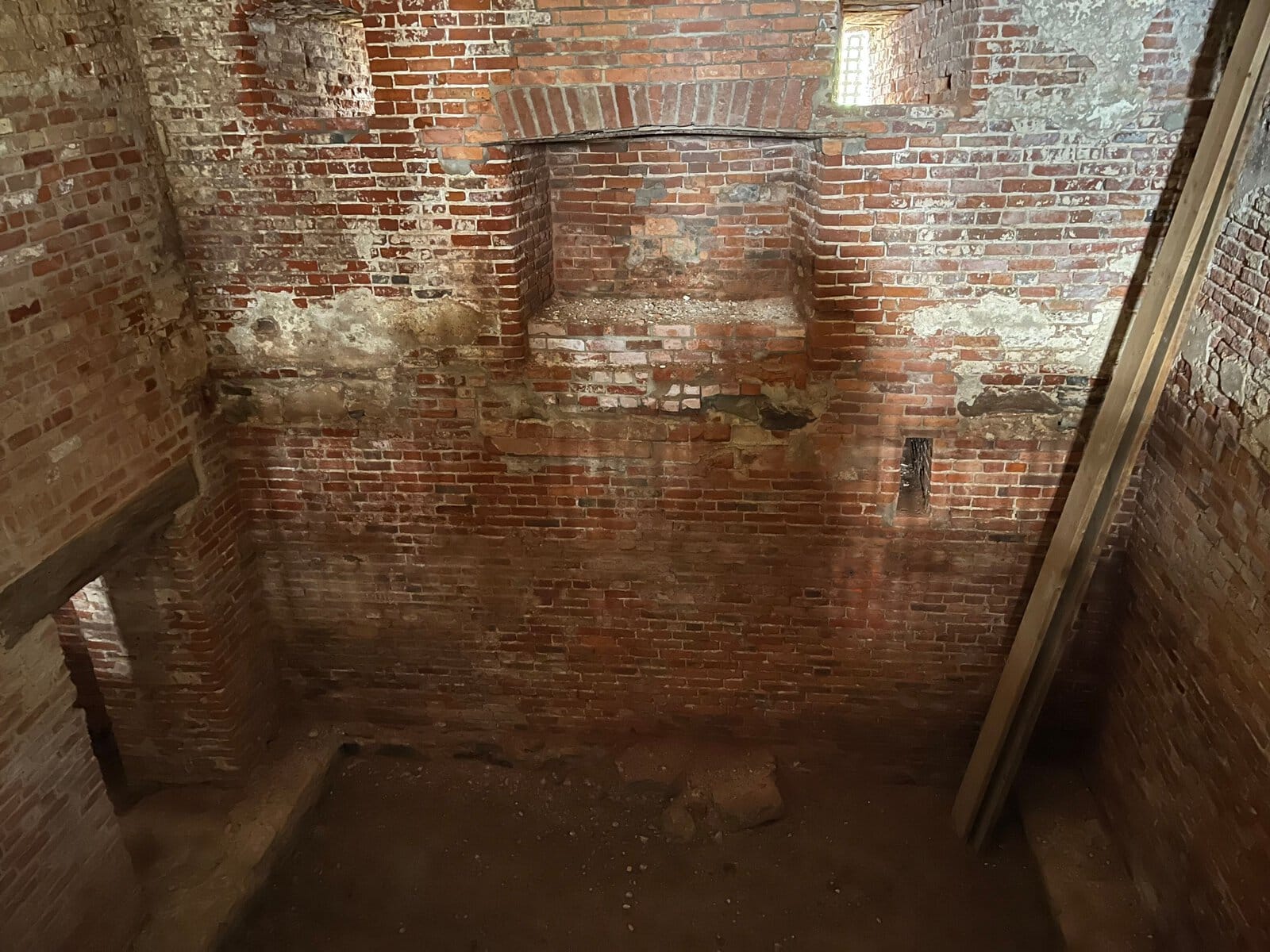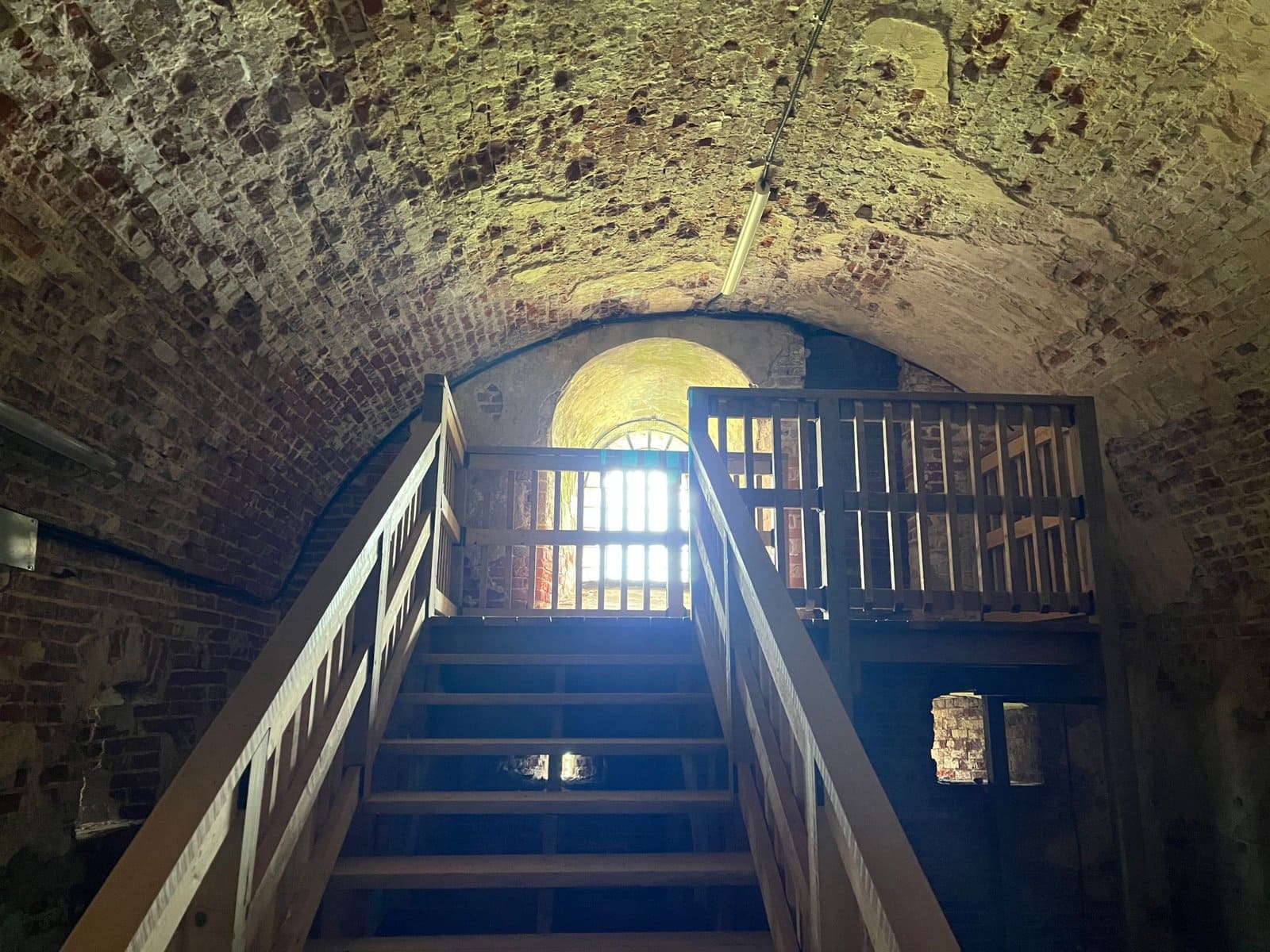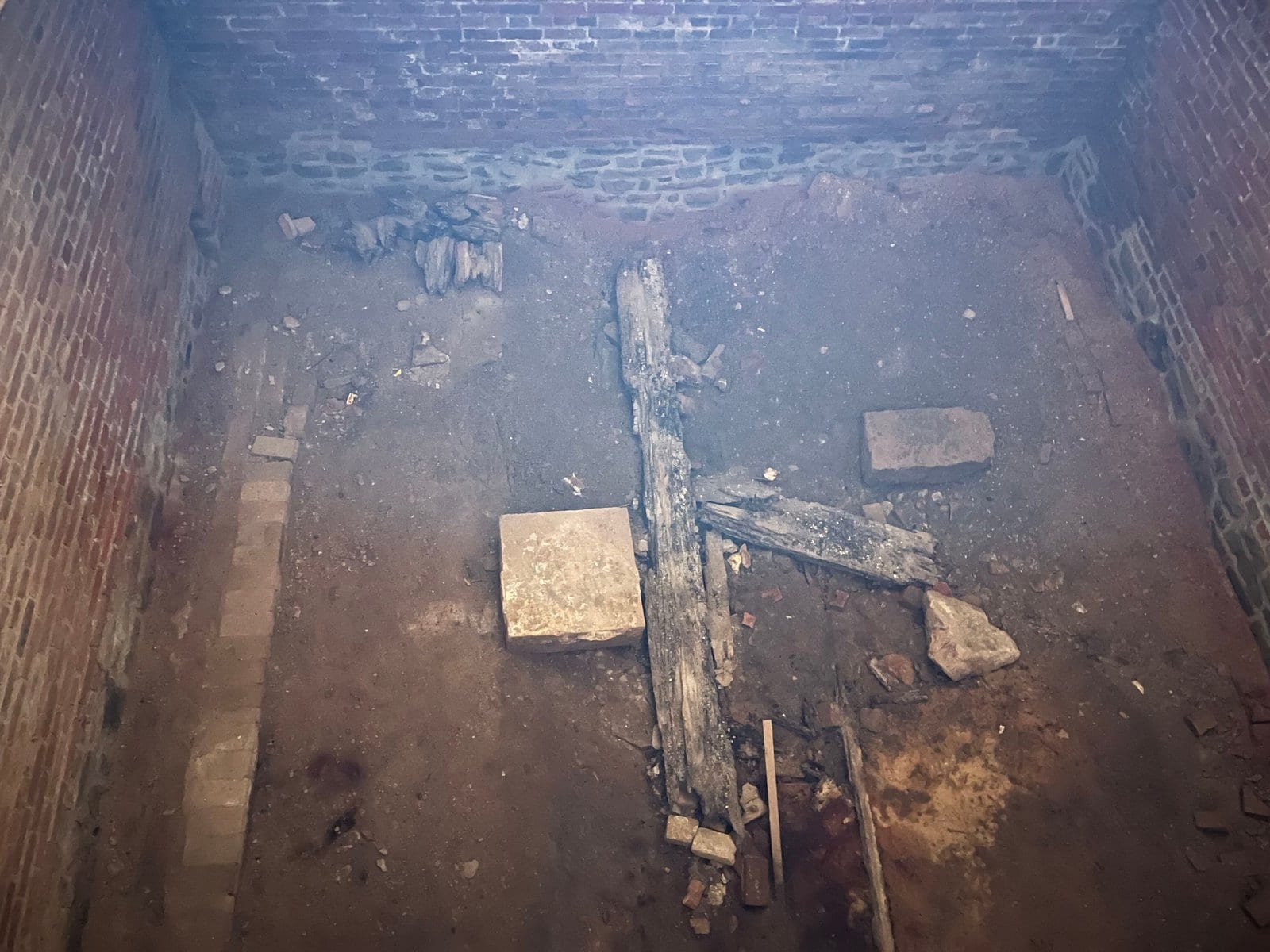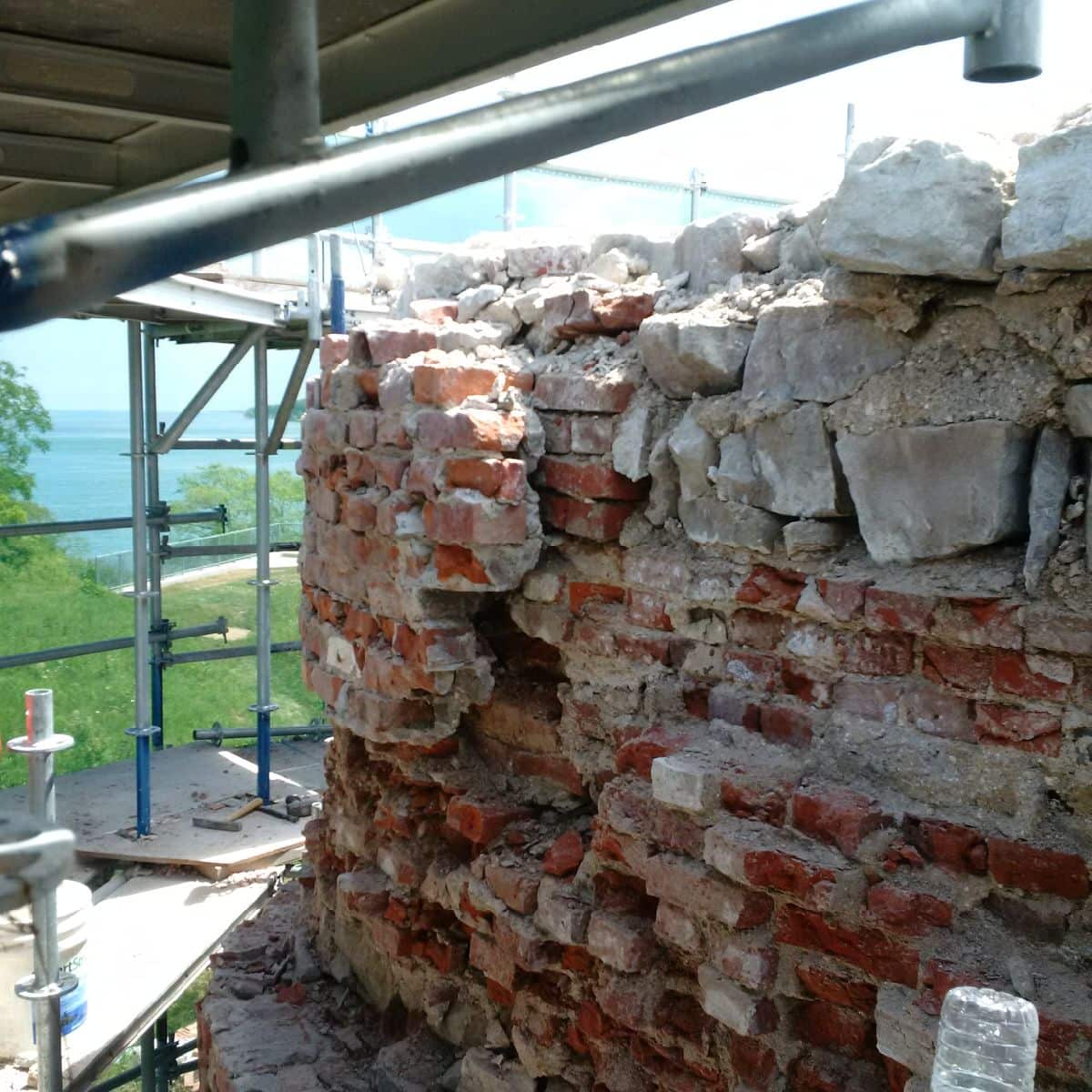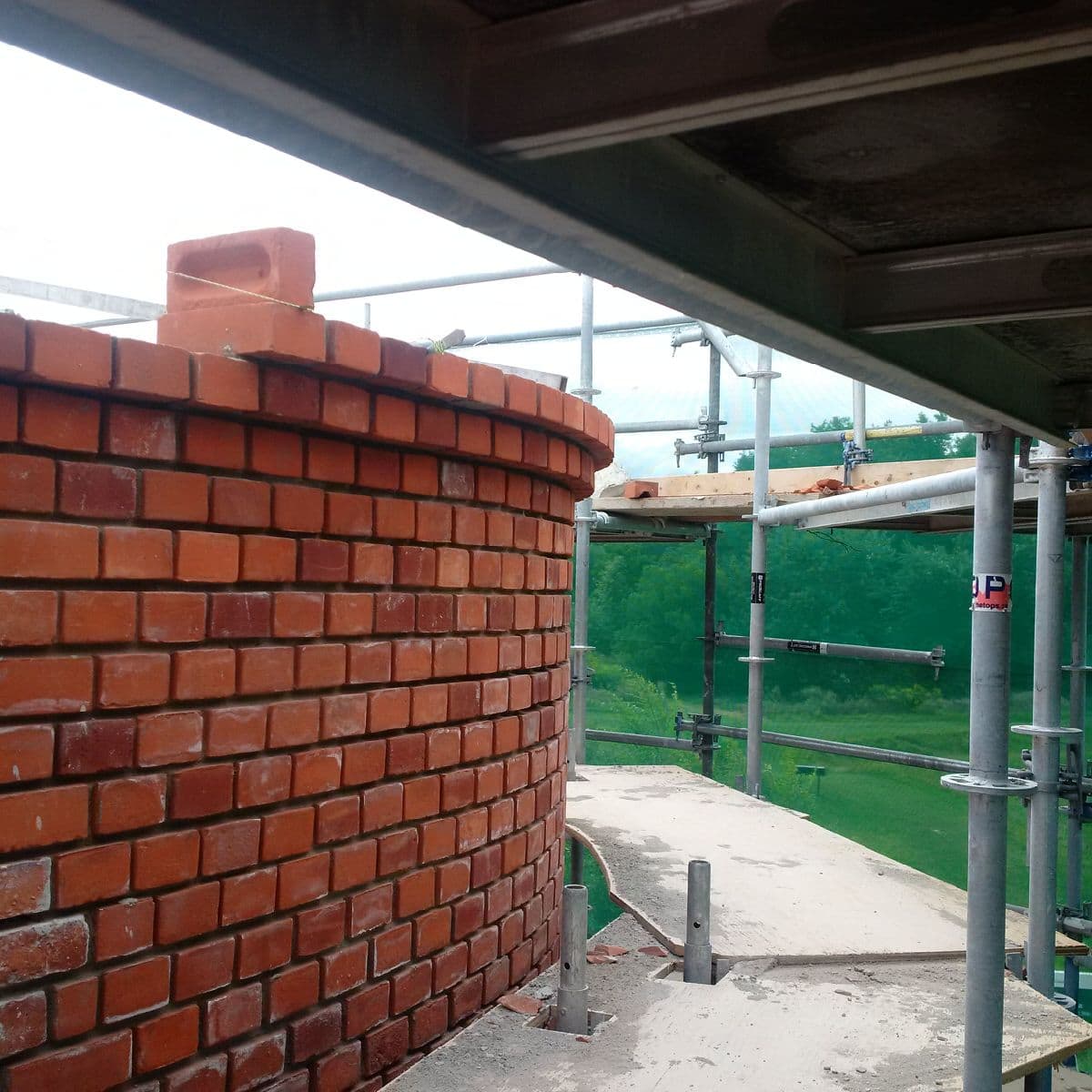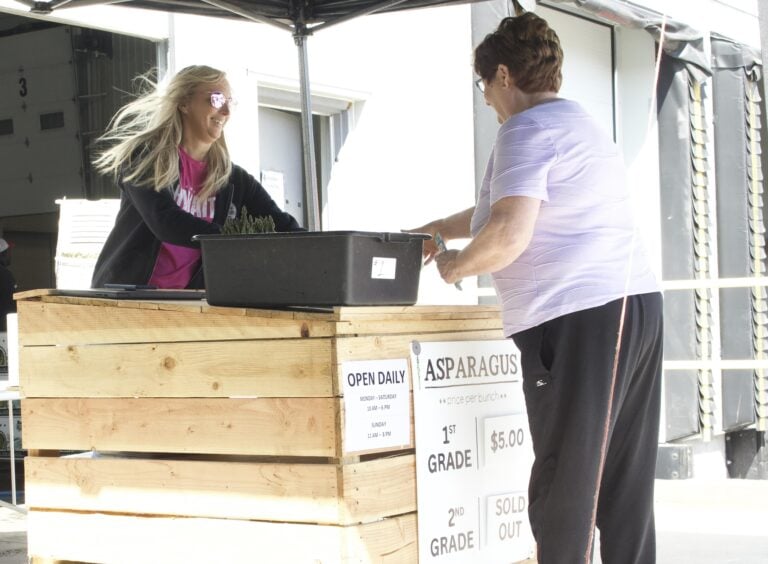Nestled amid the grounds of the Niagara-on-the-Lake Golf Club, where the Niagara River washes into Lake Ontario, is a fire- and bomb-proof fortification with walls thick enough to withstand cannonballs.
Since 2019, the Fort Mississauga national historic site has been undergoing extensive renovations to repair water damage inside its walls.
A $7.3-million federal infrastructure grant funded the project.
Chris Zoetewey, the project’s lead, and Sarah Quinlan Cutler, the interim superintendent of national historic sites in southwestern Ontario, were pleased to showcase the heritage site’s finished exterior work during a media tour last Friday.
Those working on the restoration have reinstated the earthworks surrounding the fort, replaced the roof, stabilized the central tower and structures and built a new pedestrian boardwalk.
They also completed work to stabilize the shoreline to combat erosion, ensure public safety and protect historical artifacts, along with revegetation along the shoreline.
The exterior restoration at the fort was completed in November 2021.
Before restoration began, Zoetewey said the team discovered a large amount of water building up within the walls.
The thick exterior walls are made of brick, as are the interior walls, and in between is limestone rubble.
The limestone rubble is from the first lighthouse of Upper Canada that used to sit where the fort is today.
“Because it’s rubble-filled, it’s got brick on the inside, brick on the outside. If water gets in there and freezes, it pushes the wall out,” he said.
He pointed to an exterior corner of the fort that was bulged out due to water damage.
“We had the entire tower evaluated and a heritage recording done, and based on that, we were getting water into the rubble fill,” he said. “So we had to do something about it.”
Though the exterior restoration stage is completed, the team needs to let the water drain naturally before it continues with interior work on the walls.
Zoetewey said it could take five to 10 years for the water to fully drain.
“Now we wait for the column to dry, because if we were to jump on the restoration immediately, with all the water in there, it would destroy any work that we would do,” he said.
Fort Mississauga was built between 1814 and 1816 after the battle of the War of 1812 and is the only one of its kind left in Canada with a square tower and star-shaped earthwork.
The walls of the fort are so thick they could withstand cannon fire.
“If a cannonball hits the brick on the outside, the energy from that impact actually gets carried to the rubble fill,” said Zoetewey.
All the energy from the impact gets dispersed, making the fort a safe place to be in an attack.
Fort Mississauga has a lot of unique and historic characteristics, many connected to Niagara-on-the-Lake.
“It is sort of a jewel and has ties to all of the history of Niagara-on-the-Lake,” said Zoetewey.
“It’s believed the first 10 feet of this structure is built from the reclaimed brick of the town of Niagara-on-the-Lake after the Americans left and burned the town to the ground,” he added.
During the tour, The Lake Report got a look inside the historic fort.
The first thing you notice is the cold air on your skin. The second thing is how dark it is.
Once your eyes adjust, you can see you’re walking on a newly built wooden pathway that allows people to move from the first room to the magazine powder room, where the ammunition would have been stored.
“We were very happy that we were able to complete this design with very, very little impact to the heritage of the building,” said Zoetewey.
He said that the pathway was supported by helical piers, which “actually cuts into the soils and minimizes the impact on the soil.”
One look over the railing and you can see the original floor the team accidentally found during the restoration process.
“You can see the original features from the rebellion period that we exposed,” said Zoetewey.
Even the holes in the walls within the fort have a story.
“You can see square holes – those are the wood pegs for where they would actually attach the shelving to the wall,” he said.
The fort is a work in progress, but restoring it is a way to “give our past a future,” said Quinlan Cutler.
“(We want to) see what we can do with this to make sure people can really connect with the history of this area,” she said.
“Not just this era, but the era before this as well. So bringing in First Nations stories, bringing in military stories,” she added.
She said they’d also like to find ways to bring people through the building in the future.
In 2021, the restoration team won an award of excellence in conservation engineering from the Canadian Association of Heritage Professions for stabilizing Fort Mississauga’s tower.
“We were really proud of the work that Chris and his team and the archeologists and the cultural resource specialists did here,” said Quinlan Cutler.



